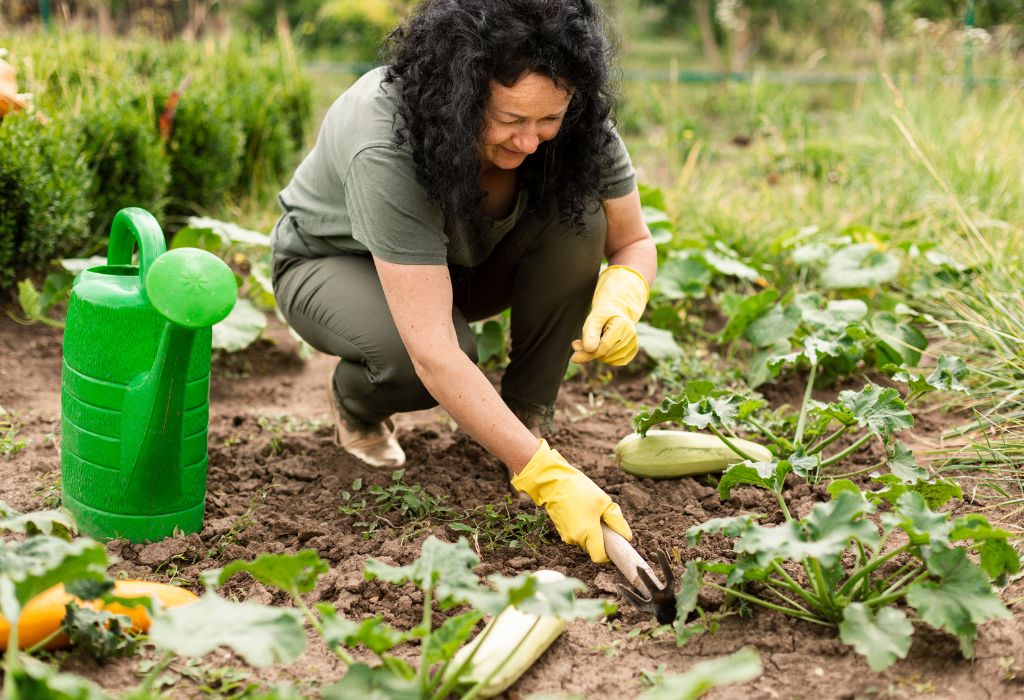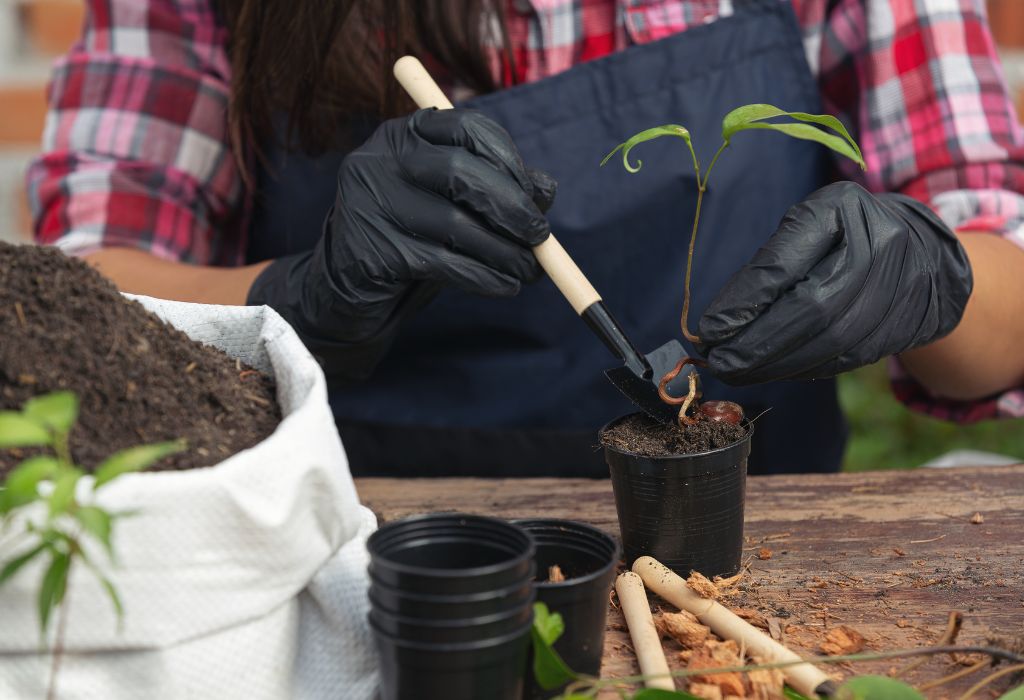A gardener faces an all-too-familiar dilemma: vibrant seedlings suppressed by relentless weed growth. Soil fertility and safe harvests feel jeopardized by the thought of applying weed killer, yet the weeds persist without intervention.
This introduces a serious concern: Can weed control tools protect the garden without harming soil microbes or edible plants? The promise of safe weed control raises curiosity for practical, sustainable solutions.
Weeds inflict real damage—globally, about 34 percent of agricultural losses are caused by weeds, threatening food security and soil health . Meanwhile, uncontrolled weeds alone could slash corn and soybean yields by 50 percent, resulting in $43 billion in annual losses across North America .
Understanding Weed Killers in the Garden

Weed killers, also called herbicides, are designed to eliminate unwanted plants competing with crops for nutrients and sunlight. They vary widely in composition, strength, and environmental impact.
Selective herbicides target specific weed species while leaving crops unharmed. Non-selective products kill nearly everything they touch, making timing and placement essential for garden safety.
Chemical weed killers often work quickly but can pose risks to soil microorganisms and long-term fertility. Organic alternatives like vinegar or corn gluten meal are gaining popularity as eco-friendly options for home gardeners.
Pre-emergent herbicides prevent weed seeds from germinating, offering proactive protection for clean soil beds. Post-emergent sprays, on the other hand, attack existing weeds and are often used as spot treatments.
Understanding the differences between these products helps gardeners choose solutions aligned with soil health, environmental safety, and crop protection goals.
Can I Put Weed Killer in My Garden Without Harming Soil?
Many gardeners worry about chemical residues disrupting soil health after spraying weed killers. Soil microbes play a vital role in nutrient cycling, plant growth, and overall ecosystem balance.
Research shows that some herbicides can linger in soil for weeks or even months depending on weather, dosage, and chemical type EPA Source. These residues may affect soil pH and harm beneficial microorganisms if misused.
Vegetable gardens are especially vulnerable because edible crops can absorb chemicals through roots. Residual herbicides can also affect earthworms and other organisms essential for aerating and enriching soil structure.
Proper timing, correct dosage, and following label instructions reduce contamination risks significantly. Rainfall, soil texture, and organic matter levels also influence how quickly herbicides break down into harmless compounds.
Understanding these factors allows gardeners to control weeds effectively while maintaining soil fertility, microbial activity, and long-term productivity.
Types of Weed Killers: Pros and Cons
Weed killers fall into several categories, each with unique benefits and drawbacks. Understanding these helps gardeners choose the right product for soil safety and weed control.
Chemical herbicides, such as glyphosate-based formulas, are highly effective but often raise concerns about long-term soil health and environmental impact. Their residual effects vary widely, so application timing is critical for protecting crops and microorganisms.
Organic alternatives like vinegar sprays or corn gluten meal are safer for soil ecosystems but may require repeated applications for consistent results. They typically work best for smaller weeds or as part of an integrated weed management plan.
Pre-emergent herbicides stop weed seeds from germinating, making them ideal for preventing new infestations before they start. Post-emergent options target existing weeds, offering immediate control when infestations are already visible.
Non-selective herbicides kill all vegetation, while selective types target specific weeds without harming surrounding plants. Choosing the correct category minimizes collateral damage and preserves garden productivity.
Best Practices for Safe Application

Applying weed killer correctly makes the difference between a healthy garden and damaged soil. Following best practices protects plants, microbes, and the surrounding environment.
Start by reading the product label carefully because every herbicide has unique instructions for timing, dosage, and safety precautions. Ignoring these directions often leads to overuse, runoff, and unintended harm to beneficial organisms.
Apply weed killer on calm, dry days to prevent drift onto nearby crops and reduce the risk of leaching into groundwater. Heavy rain shortly after application can carry chemicals deep into the soil or into water sources.
Use protective equipment such as gloves, masks, and long sleeves to minimize direct exposure. Children and pets should be kept away from treated areas until the product has fully dried or as instructed on the label.
Finally, record each application to avoid over-spraying the same area repeatedly, which can cause long-term soil contamination and chemical buildup.
Organic Alternatives to Chemical Weed Killers
Many gardeners prefer natural solutions to protect soil health while controlling weeds effectively. These methods reduce chemical use, protect beneficial insects, and improve long-term sustainability.
Mulching is one of the most popular organic techniques because it blocks sunlight, preventing weed seeds from germinating. Materials like straw, wood chips, or compost also help retain soil moisture and boost fertility.
Soil solarization uses heat from the sun to kill weed seeds and pathogens. This method involves covering moist soil with clear plastic for several weeks, allowing trapped heat to sterilize the topsoil naturally.
Vinegar sprays, corn gluten meal, and even boiling water can be used as natural herbicides for spot treatments. They require careful application but are safer for edible crops and surrounding ecosystems than synthetic chemicals.
Combining these organic methods with crop rotation and cover crops creates a long-term integrated weed management system that minimizes reliance on chemical herbicides.
Long-Term Soil Health and Weed Prevention

Building soil health is the most sustainable way to reduce weed growth over time. Healthy, fertile soils support stronger plants that naturally outcompete unwanted weeds.
Crop rotation disrupts weed life cycles and helps balance soil nutrients. Switching plant families each season reduces the chances of weed populations becoming dominant in one area.
Cover crops like clover or rye prevent bare soil from becoming a breeding ground for weeds. Their dense root systems suppress weed seedlings and add organic matter when tilled back into the soil.
Living mulches such as low-growing ground covers protect the soil surface while providing competition against weeds. They also help retain moisture and reduce erosion risks during heavy rains.
Reducing soil tillage minimizes bringing dormant weed seeds to the surface where they can sprout. This practice keeps the seed bank buried and less likely to invade growing beds.
Conclusion
Weed control in the garden does not have to come at the cost of soil health. By understanding different herbicide types and using them responsibly, gardeners can minimize risks while keeping weeds under control.
Organic methods like mulching, cover crops, and solarization add long-term benefits to the soil ecosystem. Combining these with selective herbicides when necessary creates a balanced, sustainable approach to weed management.
The key lies in careful timing, proper dosage, and ongoing soil care practices. Healthy soil supports thriving plants, reduces weed growth, and ensures safer harvests for years to come.
For the best results, start with soil testing, follow product instructions, and explore natural weed control options before turning to chemicals. This approach protects both the garden’s productivity and its ecological health.
I’m Maya L. Greenwood, a lifelong plant lover who believes anyone can grow something beautiful with the right guidance. After years of testing soil mixes, pruning methods, irrigation tricks, and pest-safe solutions, I started EasyGardenTips.com to turn hard-won lessons into step-by-step advice. From seed starting and container gardens to composting and seasonal checklists, my goal is to make gardening simple, sustainable, and fun.
